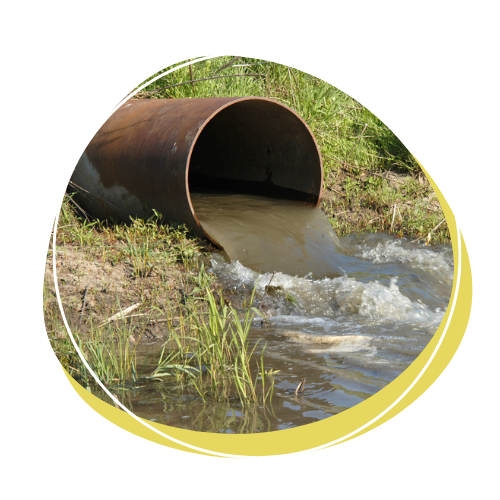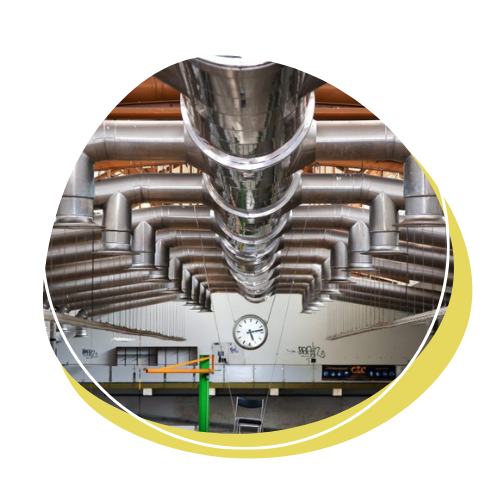ENVIRONMENTAL MONITORING
Water Quality
Monitoring
System
Water quality monitoring involves the systematic assessment and measurement of various physical, chemical, and biological parameters in water to evaluate its suitability for specific uses and to ensure the health of aquatic ecosystems. This process is essential for understanding the condition of water bodies, identifying potential pollution sources, and making informed decisions about water resource management.
Physical Parameters: Temperature, Turbidity, etc.
Chemical Parameters: pH, Dissolved Oxygen (DO), Nutrients, Heavy Metals, etc.
Microbiological Parameters: Fecal Coliforms and E. coli
Sediment Quality: Sediment Composition
Toxicity Testing: Bioassays
Using automated sensors and data loggers to continuously monitor parameters like temperature, dissolved oxygen, and pH over time.
Water quality monitoring is conducted by environmental agencies, research institutions, and local communities to comply with regulations, protect public health, and safeguard aquatic ecosystems. Regular monitoring allows for the early detection of pollution, the assessment of trends, and the implementation of effective water management and conservation strategies.
Noise Monitoring
Noise monitoring is the systematic measurement and assessment of sound levels in a particular environment, typically conducted to evaluate and manage noise pollution. Noise monitoring helps quantify and characterize the intensity, duration, and frequency of sound in a given area, providing valuable information for regulatory compliance, public health, and urban planning.
Effective noise monitoring is crucial for mitigating the negative effects of noise pollution on public health, maintaining quality of life in residential areas, and informing land-use planning decisions. It is also a valuable tool for regulatory agencies and urban planners to address and manage noise-related issues.
Ambient Air Quality Monitoring System
Air quality monitoring is the systematic assessment and measurement of the concentration of pollutants present in the ambient air. This process is crucial for understanding the quality of the air we breathe, identifying sources of pollution, and assessing compliance with air quality standards and regulations. Air quality monitoring provides valuable information for public health, environmental protection, and the development of strategies to improve air quality. Here are key aspects of air quality monitoring:
Pollutants Monitored: Particulate Matter (PM), Ozone (O3), Nitrogen Dioxide (NO2), Sulfur Dioxide (SO2), Carbon Monoxide (CO)
Monitoring Stations: Fixed monitoring stations are strategically located in urban, suburban, and industrial areas to capture representative data. Mobile monitoring units may be used to assess air quality in specific locations or during events.
Continuous Monitoring: Automated sensors and monitoring devices continuously measure pollutant concentrations, providing real-time data. Continuous monitoring is particularly important for pollutants with short-term or variable concentrations, such as ozone.
Data Analysis and Reporting: Collected data are analyzed to assess compliance with air quality standards and identify trends. Reports and public communications provide information about air quality levels and health advisories.
Meteorological Data: Weather conditions, including temperature, wind speed, and atmospheric pressure, are often monitored to understand the dispersion and transport of pollutants.
Air Quality Index (AQI): The AQI is a numerical scale used to communicate air quality to the public. It provides a simple way to convey the potential health effects of air pollution.
Regulatory Compliance: Air quality monitoring is often conducted to ensure compliance with national or regional air quality standards and regulations.
Public Health Protection: Information from air quality monitoring helps protect public health by providing early warnings of elevated pollution levels.
Air quality monitoring programs are typically carried out by government agencies, environmental organizations, and research institutions. Monitoring data play a crucial role in developing and implementing air quality management plans, regulating industrial emissions, and informing the public about potential health risks associated with air pollution.
Stack Emission Monitoring
Stack monitoring, also known as stack emission monitoring or source monitoring, is the process of measuring and analyzing the emissions released from industrial stacks or chimneys. The objective is to assess the quantity and composition of pollutants being discharged into the atmosphere from various industrial processes. Stack monitoring is a critical component of environmental regulation and air quality management.
Stack monitoring is essential for ensuring that industrial activities do not contribute excessively to air pollution, protecting air quality, and safeguarding the health of both humans and the environment. It is typically conducted in a transparent and systematic manner to meet regulatory requirements and promote environmental responsibility.
Effluent Monitoring
Effluent monitoring refers to the process of regularly measuring and analyzing the quality of wastewater or other liquid discharges from industrial, municipal, or other sources into the environment. The term “effluent” typically refers to the liquid waste or discharge from a manufacturing process, industrial facility, sewage treatment plant, or other sources. Monitoring these effluents is crucial to ensure compliance with environmental regulations, protect water quality, and assess the impact of human activities on ecosystems.
Effluent monitoring involves the collection of samples from the discharge point, followed by laboratory analysis or on-site measurements to determine the concentrations of various pollutants and parameters. Effluent monitoring plays a critical role in sustainable environmental management, helping to balance the needs of human activities with the protection of natural resources and ecosystems.


Marine Ecology
Marine ecology is the scientific study of interactions among organisms and their environments in the world’s oceans and seas. It is a branch of ecology that focuses specifically on marine ecosystems, which encompass a wide range of habitats such as coral reefs, open ocean, deep-sea environments, estuaries, and coastal zones. Marine ecologists investigate the distribution, abundance, and dynamics of marine organisms, as well as the physical and chemical factors that influence marine ecosystems.
Marine ecology plays a crucial role in advancing our understanding of the complex and interconnected nature of marine ecosystems. This knowledge is essential for effective conservation and sustainable management of marine resources in the face of various environmental challenges.
LEV inspection and assessment
LEV stands for Local Exhaust Ventilation, which is a system designed to capture and control airborne contaminants at or near their source of generation. LEV systems are commonly used in workplaces to protect workers from exposure to hazardous substances, such as dust, fumes, vapors, or mists. LEV inspection and assessment involve the examination and evaluation of these ventilation systems to ensure they are effective in controlling and minimizing occupational exposure to harmful airborne contaminants.
LEVs should be regularly inspected and maintained to ensure they continue to provide effective control of airborne contaminants. This process helps ensure a safe and healthy working environment, compliance with occupational health and safety regulations, and the protection of workers from exposure to hazardous substances. Additionally, periodic assessments may be conducted to determine if modifications or improvements are needed to enhance the system’s performance.

